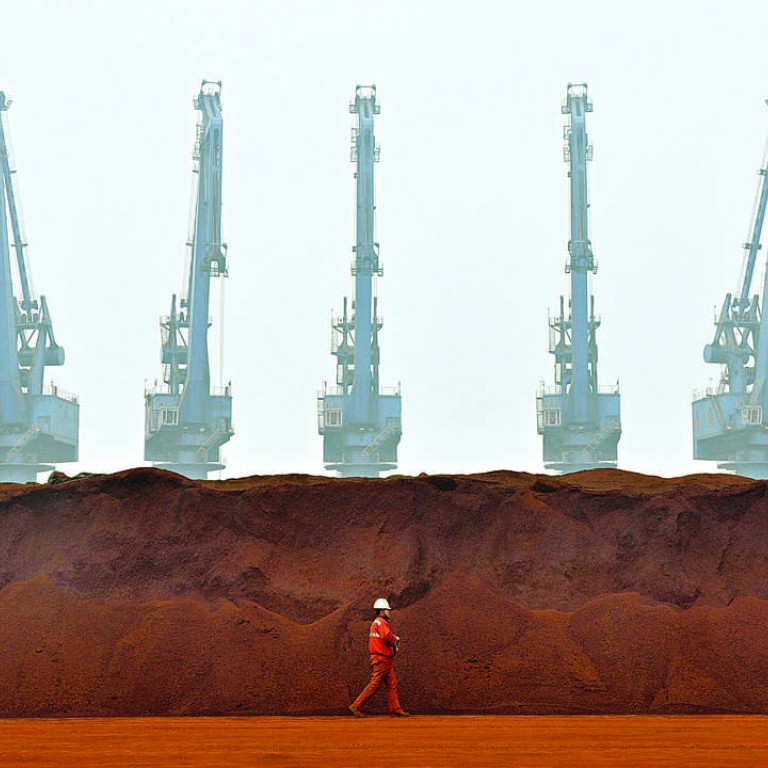
Growth and reform in tug of war as Chinese leaders grapple with hard choices
Premier Li Keqiang’s focus on GDP targets suggests that stabilisation – and not restructuring – is the top priority for this year, economists say
Just three months ago, Chinese leaders approved an annual economic blueprint that suggested reform would be this year’s top priority.
It was part of a push to tackle deep-seated structural problems such as overcapacity, bad debt and worsening income gap.
But with the world’s second-largest economy battling headwinds, the government’s bigger priority now seems to be growth, economists say, citing policy documents and remarks by leaders at the annual session of the National People’s Congress.
The reform tone was set late last year. The annual Central Economic Work Conference declared that supply-side reform – which favours less government involvement and greater play for the market – would be a major feature of China’s economic and social policies in 2016 and beyond.
But after the NPC ended on Wednesday, Premier Li Keqiang pledged that the country would achieve its 6.5 per cent minimum growth target, all the while insisting that this would not mean sacrificing planned supply-side reform.
READ MORE: We’ll stabilise China’s economy: Premier Li Keqiang sets the tone for the year ahead

Economists say that as growth falters at a rate much faster than expected, the government has put growth stabilisation ahead of its other big targets: rebalancing the economy and containing systemic risks.
In a research note on the NPC meeting, China Capital Investment Corporation economists said supply-side reforms would not come as soon as hoped. “As the government shifts the focus of economic policy this year to growth stabilisation, and the adverse growth environment is not conducive to the smooth progress of supply reforms, we expect the implementation of supply-side reforms may be slower than expected,” they said.
Only last November, President Xi Jinping’s call for “supply-side reform” at a Politburo meeting raised hopes of a renewed restructuring push.
WATCH: Can ‘supply-side reform’ fix China’s economy?
However, economists said the government’s 6.5 to 7 per cent growth target for this year and 6.5 per cent average for the next five years suggested Beijing was prepared for plenty of loose fiscal and monetary spending.
“Economic growth remains the government’s key objective,” Oxford Economics chief economist Louis Kuijs succinctly put it.

Kuijs said Li’s report “did not contain surprises and suggests a cautious approach” to reform.
He said the growth goals were ambitious and efforts to meet them might detract from reform. Regarding cutting overcapacity, the principles sound sensible and the government is committed to addressing the issue of ‘zombie enterprises’,” he said.
“But the caveat that this will be done ‘proactively yet prudently’ confirms our expectations that the efforts will be relatively timid.” When Li did mention reform on Wednesday his rhetoric was more muted than in the past.
Li highlighted the importance of revitalising the economy through streamlining bureaucracy, but the elephant in the room – how to reform China’s ailing state enterprises – was not addressed. “On reform of state-owned enterprises, the stated emphasis is ‘to promote their development’, ‘upgrade’ them and ‘improve their performance’,” Kuijs said, referring to Li’s policy statement. “But the approach with regard to SOE reform seems otherwise cautious.”

Shen said the premier avoided the term “deleverage” both at the NPC and the subsequent news conference, despite the central work conference defining it as a key task in December.
“As stabilising the economy becomes the top priority, we believe the government wants to encourage leverage rather than deleveraging,” Shen said.
Economists also noted that the 3 per cent of GDP deficit was the highest level since 1949. And the 13 per cent growth of M2 – the measure of broad money supply – is 5-6 percentage points higher than nominal GDP growth.

